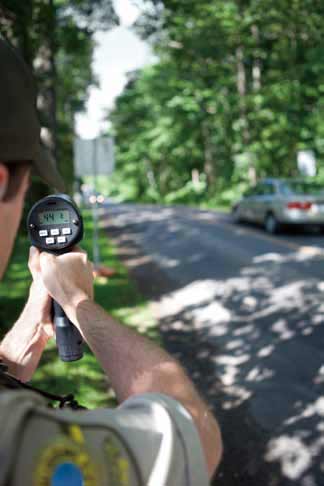DEVELOPING REALISTIC SPECS
 While practice makes perfect, it is not always wise to replicate the practices of an existing traffic project. Terrain, technology and cost are among the factors that constantly change. “Often, requirements are copied one to one, without looking at what the best option is for the application the end user wants to realize,” Hobbelink said.
While practice makes perfect, it is not always wise to replicate the practices of an existing traffic project. Terrain, technology and cost are among the factors that constantly change. “Often, requirements are copied one to one, without looking at what the best option is for the application the end user wants to realize,” Hobbelink said.
Some bid requirements are reasonable, while others are less so. “In cases where the requirements are reasonable or comply with the surveillance standards, vendors may offer customization services,” said Cheng Yu, PM at ZTE Netview Technology.
Other examples are when end users build what they consider a best-of-breed solution, but do not understand that the integration is impossible without expensive or extensive developmental effort, Ng said. These include functionalities that are vendor-specific and proprietary in nature.
The nature of the bidding process favors the lowest bid, aiming to save taxpayer money. In reality, it can undermine system quality. “Some companies will do anything to win a project,” Ma said. If a project lists certain camera requirements, any product that meets the bare minimum can be considered. However, it is impossible to measure image clarity, as well as the effort poured into developing a camera.
In India, for example, eligible contractors must have completed a security project worth US$15 million. “Tenders require experience, but the contractors who win the tender are not always quality vendors,” Ali said.
THE ROAD AHEAD
Breakthroughs in technology and partnerships promise smoother travels in the future. Gridlock will be further eased with smarter sensors and cameras on the road, providing metadata to operators and drivers. Along with faster updates, traffic video is used for more than security. In Wales, its newest traffic control center houses the traffic agency, police and TV broadcast service under the same roof. “They all get clips, although not access to everything, and use it when they need it,” Gorshkov said. “This design of an operating control center optimizes the data they have and provides high-quality feeds to those that need them.”
New advances in video surveillance integrate GIS positional data. “It's helpful for sending ambulances or knowing where an object is in the field of view or which area of perimeter has been tripped,” Gorshkov said.
IBM's traffic solution for the Korean city of Bucheon provides real-time alerts, yielding a tantalizing glimpse into the future. “The city leverages video data better than it used to, to understand how traffic flows and where choke points are,” Swaminathan said. “The solution helps the city determine traffic volume and speed, and all those translate into better information for drivers. The accuracy of traffic data increased from 50 percent to more than 90 percent. The system makes sure drivers receive accurate data on traffic congestion and tie-ups, and suggests new routes. It also helps the city increase the speed at which they collect traffic data by 1,200 percent. In large cities, it's important to collect and disseminate information efficiently.”
The proliferation of smart phones also puts more eyes on the ground. “If there's a bad accident, a first responder can upload video to the server and alert other first responders by sharing the video of the incident,” O'Malley said. Operators can also pull in videos uploaded to YouTube by drivers for more timely updates, as a picture says a thousand words. “If the monitoring center, security centers or dispatchers can see video, they can bring the appropriate resources to the incident quickly. This is a way to bring down the old barriers to communication.”
As populations swell, some amount of congestion will be inevitable. However, well - coord inated management and enforcement solutions help ease gridlock. Combining good technology and best practices will result in more effective traffic monitoring.